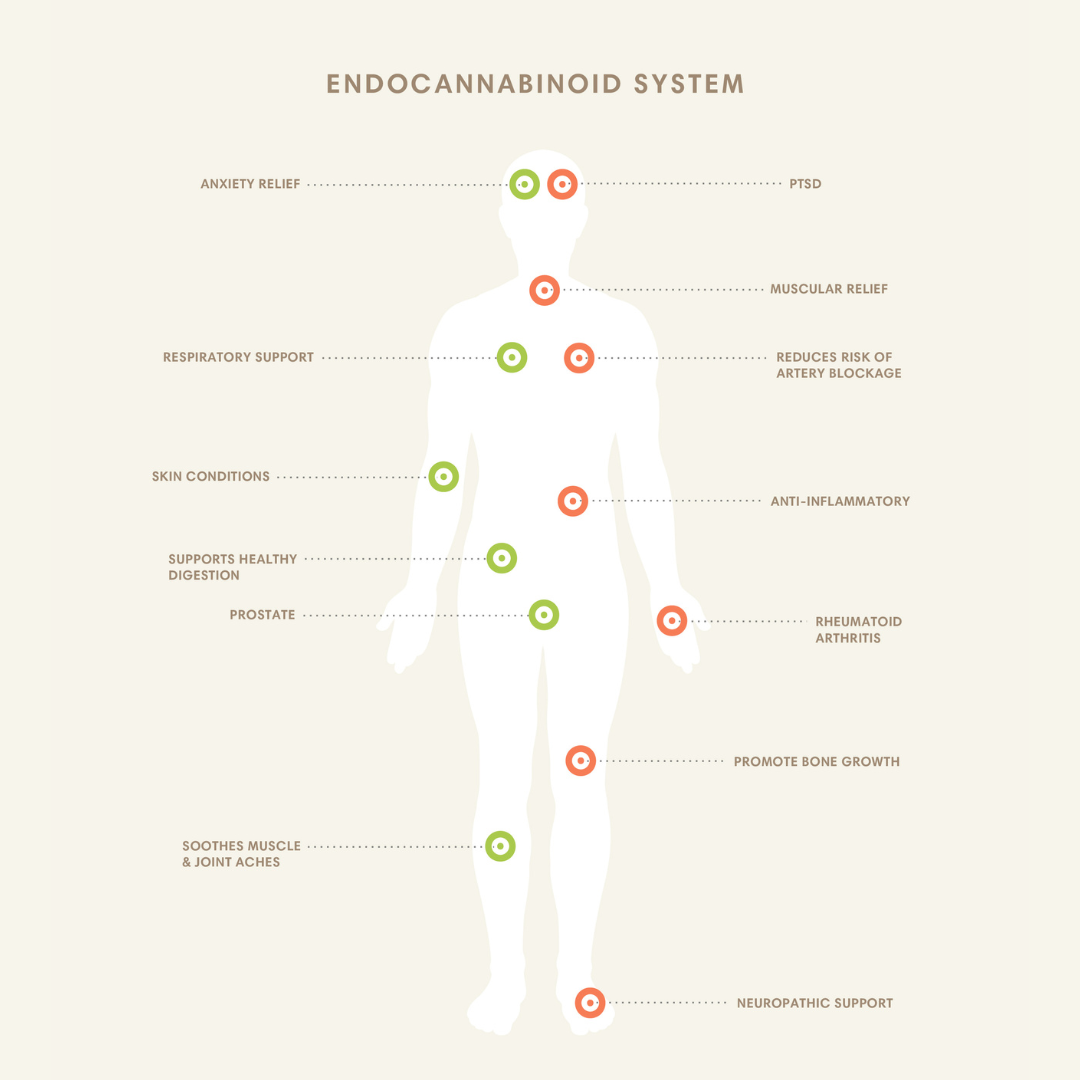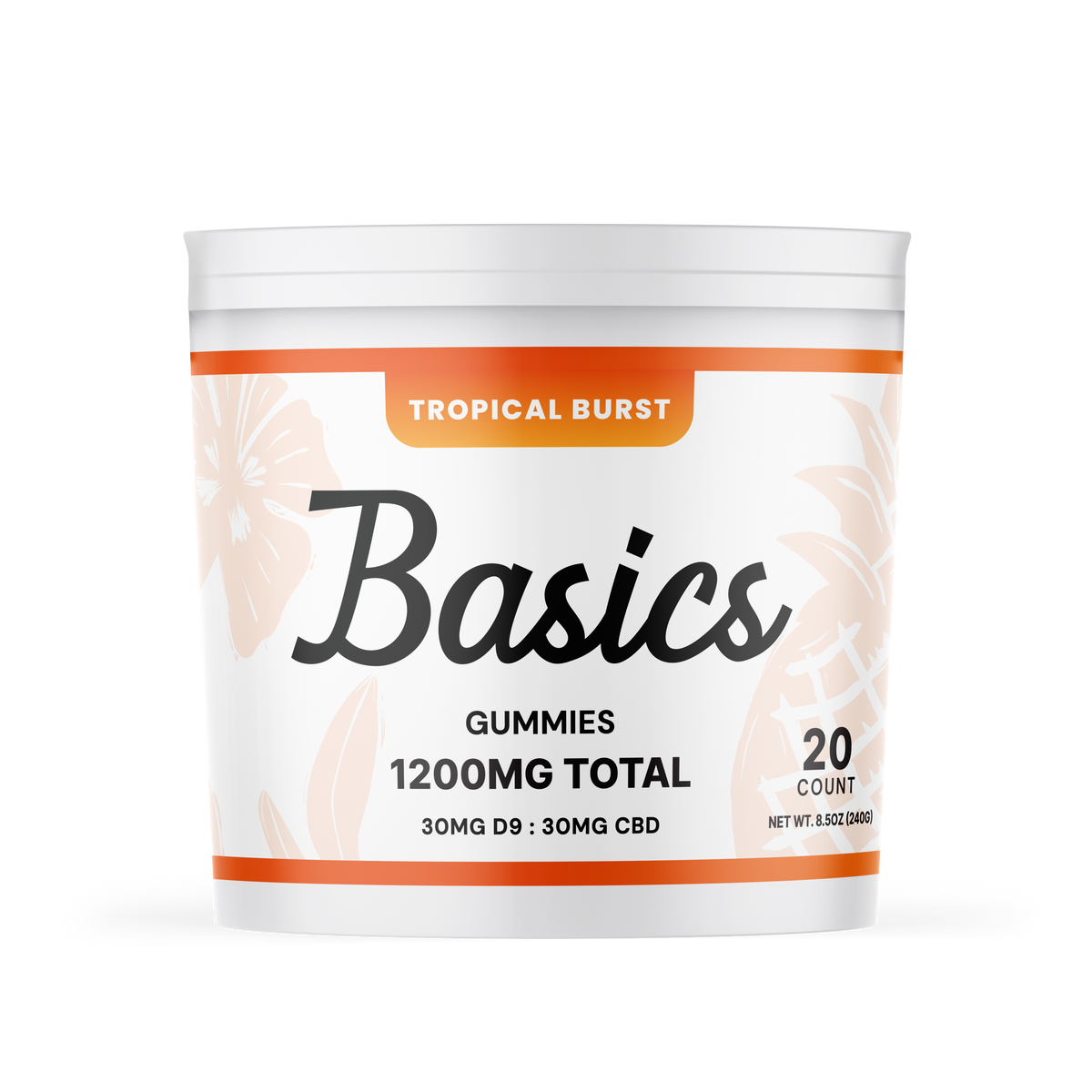What Is the Endocannabinoid System?
The endocannabinoid system is the body's natural regulatory system. It helps the body regulate eating, sleep, relaxation, inner defense systems, and memories.
The endocannabinoid system (ECS) influences neuronal synaptic communication throughout the nervous system to regulate the body's functions. The three main parts of the ECS are enzymes, receptors, and endocannabinoids.
Modifying neurotransmitter systems throughout our brain, such as glutamate, dopamine, and GABA, helps us function at our best. When dysfunction occurs, it can lead to disease and illness.
How Does The ECS System Work?
We’ve briefly touched on the three main parts of the ECS system, but let’s dive a bit deeper to learn more about each component.
Endocannabinoids
Endocannabinoids are molecules that almost function like our inner cannabis. These molecules attach to cannabinoid receptors and activate them. The two most common endocannabinoids are 2-Archidonoylglycerol (2AG) and anandamide. These molecules also interact with the same receptors as THC and elements of the cannabis plant.
Receptors
Cannabinoid receptors are in every cell of our body, which makes the ECS the mainframe of our peripheral and central nervous systems. This means cannabinoids and endocannabinoids communicate with receptors such as CB1, CB2, and GPR55.
Enzymes
Enzymes are the third component of the endocannabinoid system. They are responsible for metabolizing and breaking down cannabinoids and endocannabinoids. The most common enzymes are acid amide hydrolase (FAAH) and monoacylglycerol lipase (MAGL). Enzymes are essential because they prevent phytocannabinoid and endocannabinoids from rising to dangerous levels throughout the body. Creating balance is the job of these critical enzymes.
CBD & ECS—How Do They Interact?
The transport molecules serve as a shuttle for endocannabinoids, shipping them to where they should go. They are also critical to how CBD executes its benefits on the body.
Because cannabinoids in the body are made of fatty acids, and blood is made of water, it was initially slightly confusing how the body moved them to the right spot. But scientists more clearly understood the process when the transport molecules were discovered.
Still, fatty acid binding proteins involve more than what that brief description covered. But it’s important to understand your body knows where they are to go and how to move them.
Once endocannabinoids arrive at their destination, they interact with your cell’s receptors. These receptors regulate everything from gene expression to energy metabolism. CBD can ride these 'shuttles' within the body, giving it a front-row seat to provide a host of therapeutic benefits.
CBD also causes your body’s natural cannabinoids to stick around the cell surface longer, which activates CB1 and CB2 receptors until another 'shuttle' shows up to transport endocannabinoids to the inner part of the cell. Once inside, they deactivate via metabolic enzymes.
More simply, CBD is a reuptake inhibitor that lengthens the natural life of natural endocannabinoids. The result is a body protected by CBD.
The Untapped Power of the ECS
So much potential is yet to be discovered within the ECS in combination with CBD. Its influences on our appetite, pain sensations, mood, memory, and even the euphoric effects of exercise are powerful. Nourish your body with the right products via Canvast Supply Co.













